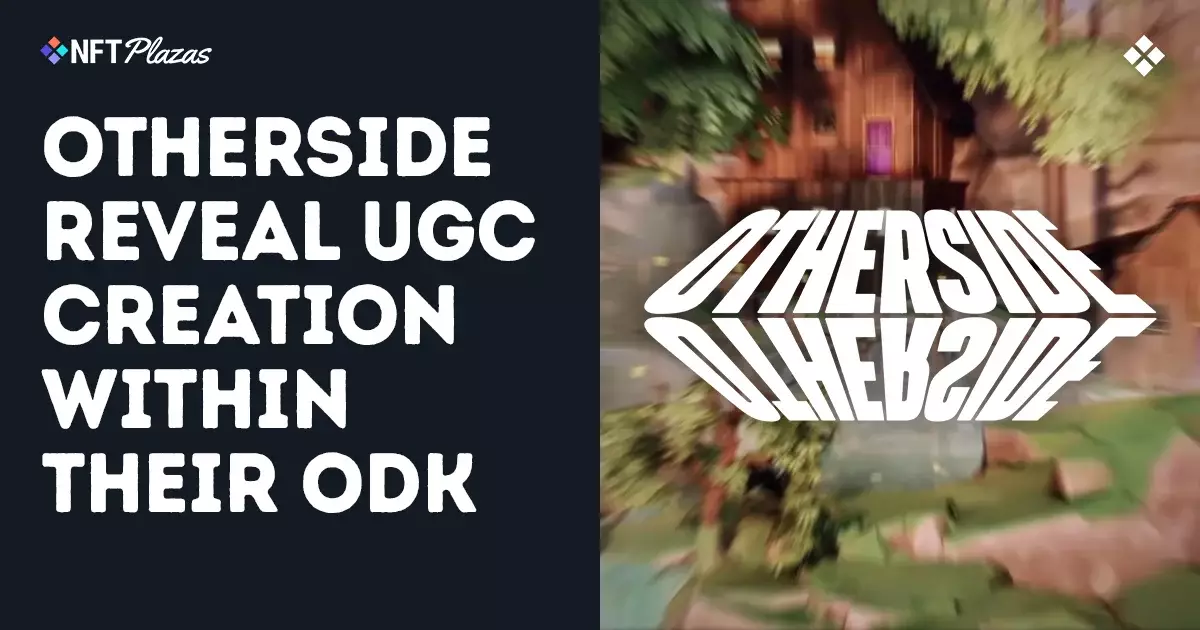The gaming landscape is undeniably changing, and Otherside, a Web3 metaverse game, is at the forefront of this transformation. By launching their official Online Development Kit (ODK), Otherside empowers players to create their own in-game content, such as maps, characters, and outfits. This democratization of game development signifies a revolutionary shift in how we engage with virtual worlds. Unlike traditional games, where studios monopolize creativity, Otherside taps into the collective creativity of its user base, allowing players to transform their artistic visions into tangible assets within the game.
However, while user-generated content stirs excitement, it also raises a pertinent question: Is this reliance on players’ creativity sustainable? Will the marketplace be flooded with subpar content, diluting the overall gaming experience? These concerns cannot be overlooked and must be managed judiciously. Moreover, how will Otherside ensure that the quality of user-generated assets meets a certain standard? The challenge remains for developers to create an ecosystem that celebrates creativity while maintaining a level of quality that justifies the investment players place in their virtual endeavors.
Monetization and Ownership Dynamics
The ODK allows players not only to create but also to monetize their creations in Otherside’s in-game marketplace. This presents unprecedented opportunities for aspiring digital creators. The concept of ownership in gaming has always been a contentious topic, yet Otherside takes a bold approach by granting players actual stakes in the game. The use of NFTs transforms in-game assets into real-world financial opportunities, aligning with the principles of center-right-wing liberalism where individual enterprise is championed.
Yet again, this ambitious venture poses several questions. How will the in-game economy function? Will it be subject to volatility akin to traditional cryptocurrency markets? While the $APE token serves as the designated currency, its value can fluctuate based on demand and speculation, potentially putting creators at financial risk. In a landscape where every interaction can feel like a high-stakes gamble, will players be incentivized to engage, or will they be deterred by financial fears? The delicate balance between freedom and risk will be a pivotal element of Otherside’s success.
A Reality Check for Ambitious Goals
Otherside aims not only to lead the charge in the metaverse realm but also to set a new benchmark for massively multiplayer online (MMO) games. The lofty ambitions are commendable, yet they also paint a target on the project’s back. The blending of MMORPG mechanics with blockchain technology is no small feat, and the path to becoming the “definitive metaverse title” is fraught with obstacles.
The developers must navigate complex technological challenges, competition from other burgeoning metaverse projects, and the ever-evolving demands of the gaming community. While the potential for success is massive, history tells us that many such ventures crumble under the weight of their own expectations. As Otherside embarks on this ambitious journey, it’s crucial to recognize the potential pitfalls that come with innovation in a rapidly shifting industry. In this realm, where vision meets execution, the stakes couldn’t be higher. The promised playtests later this year will serve as a litmus test for whether Otherside’s ideas can withstand the scrutiny of eager players.

